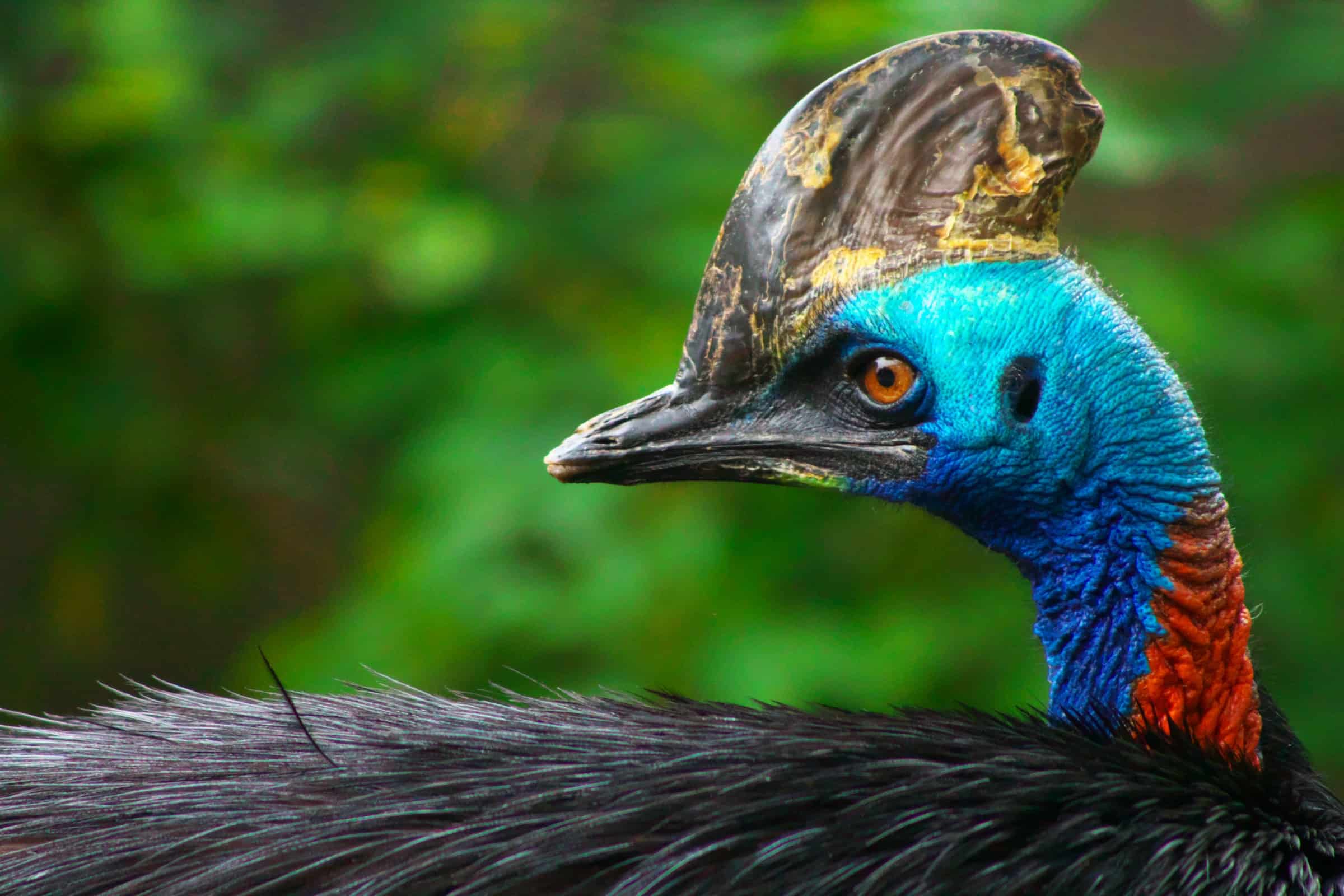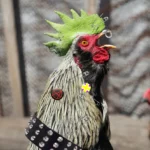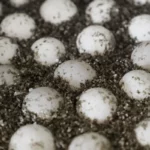Hey there, nature enthusiasts! Get ready to be amazed as we plunge into the fascinating world of cassowary eggs. These vibrant green rainforest treasures are not just giant versions of chicken eggs; they hold a treasure trove of secrets. From their unique biology to their remarkable role in conservation, this guide will ignite your curiosity and inspire a deep appreciation for the fragile balance of life in our rainforests.
Unlocking the Mysteries of Cassowary Eggs
Ever wished you could stumble upon a real-life dinosaur egg? Well, cassowary eggs might just be the closest thing! These massive, beautiful eggs, around 5 inches long, 3 inches wide, and weighing over a pound, seem straight out of prehistoric times. Their stunning green or blue-green color screams “rainforest treasure,” and their super-strong, thick shells are built to withstand the elements.
Now, let’s talk about cassowary parents. Interestingly, the fathers handle all the parenting duties! Imagine sitting on those giant eggs for almost two months – that’s dedication! During the fall and winter months, these devoted dads nestle in their nests, carefully keeping their precious cargo safe and warm for about 50 days.
Get ready for cuteness overload when those little chicks finally hatch! Covered in adorable brown and white stripes for rainforest camouflage, they rely on their dad, who teaches them rainforest survival for up to nine months. He guides them on what to eat (fruits, insects, and even the occasional small animal) and how to stay safe in their jungle home.
But here’s the thing – cassowaries need our help. The Southern Cassowary, in particular, is facing serious threats, mainly due to habitat loss from deforestation. Protecting these incredible birds and their amazing eggs is crucial. Conservation efforts focus on preventing deforestation near nesting sites and ensuring these dinosaur-like wonders have enough space to raise their families.
Why are cassowary eggs green?
The striking green hue of cassowary eggs, a result of a pigment called biliverdin, makes them stand out. Biliverdin is present in the eggshells of many birds, but its high concentration in cassowary eggs gives them their vibrant color.
But why green? Many scientists believe it provides effective camouflage in dense, tropical rainforests where the ground is often covered in green vegetation. A green egg nestled amongst the leaves is harder for predators to spot than a bright white one.
Camouflage might not be the only reason. Research suggests biliverdin could benefit developing chicks. Studies on other bird species show biliverdin has antioxidant properties, potentially protecting embryos from damage. Some scientists speculate it might also strengthen eggshells, making them less likely to crack.
More research is needed to definitively explain the green color of cassowary eggs. It’s likely a combination of camouflage and health benefits, highlighting the fascinating intricacies of the natural world.
Are Cassowary Eggs Edible?
Okay, so you’re curious about eating cassowary eggs. It’s a fair question, considering their size and unique origin. The short answer is yes, they are technically edible. But before you get any cooking ideas, let’s discuss why you probably shouldn’t.
Firstly, cassowaries are endangered, meaning every egg is vital for the species’ survival. Eating cassowary eggs could push these incredible creatures closer to extinction.
Beyond that, there’s an ethical aspect to consider. Cassowaries are intelligent, social animals that carefully raise their young. Eating their eggs would deprive them of the chance to raise a family.
And honestly, cassowary eggs aren’t a nutritional powerhouse. While they contain protein and nutrients, they’re not a superfood. You’d be better off (ethically and nutritionally) sticking with chicken eggs or other readily available options.
There are countless ways to appreciate cassowaries without making them breakfast. You can support conservation efforts, visit them in zoos, or learn more about these amazing birds. Preserving these creatures is essential for a more vibrant and diverse world.
Was the Cassowary a Dinosaur?
Cassowaries, with their powerful build and prehistoric appearance, often evoke images of dinosaurs. While not technically dinosaurs, their history goes way back.
Cassowaries belong to the Palaeognathae family, which includes emus, ostriches, and kiwis. This family branched off from other birds long ago, even before the dinosaurs disappeared! This means cassowaries share a common ancestor with dinosaurs, making them more like distant cousins.
But the family resemblance doesn’t end there. Cassowaries have features reminiscent of their theropod dinosaur relatives:
- The Casque: This prominent bony helmet atop a cassowary’s head resembles structures found on some theropods, like the Carnotaurus. Scientists are still deciphering its exact purpose – display, defense, or communication – but the resemblance is striking.
- Those Claws: Those powerful legs with three toes, each sporting a sharp claw (especially the inner toe’s dagger-like claw, reaching up to 5 inches long!), are reminiscent of prehistoric predators.
- Size and Stature: Some cassowaries, like the Southern Cassowary, are giants in the bird world, reaching up to 5ft 11in tall and weighing over 130 lbs. Their size and power command respect, much like their dinosaur ancestors.
So, What’s the Verdict?
While cassowaries aren’t dinosaurs in the strictest sense, their ancient lineage and dinosaur-like features provide a glimpse into the past. They are living reminders of a time when dinosaurs roamed the earth and offer clues to the incredible history of life on our planet.
To learn more about other fascinating creatures, check out the chain catshark and cicada larvae.
Key Points About Cassowary Eggs:
-
Egg Characteristics:
- Massive size (5 inches long, 3 inches wide, over 1 pound)
- Striking green or blue-green color
- Thick, sturdy shell
-
Parenting:
- Fathers incubate eggs for 50 days
- Fathers raise chicks for up to 9 months
-
Chicks:
- Hatch with brown and white stripes for camouflage
- Learn from their fathers about feeding and survival
-
Conservation Concerns:
- Southern Cassowaries face threats from deforestation
- Protection efforts focus on preserving nesting sites and habitat

















1 thought on “Cassowary Egg Deep Dive: Uncovering the Secrets of These Rainforest Treasures”
Comments are closed.